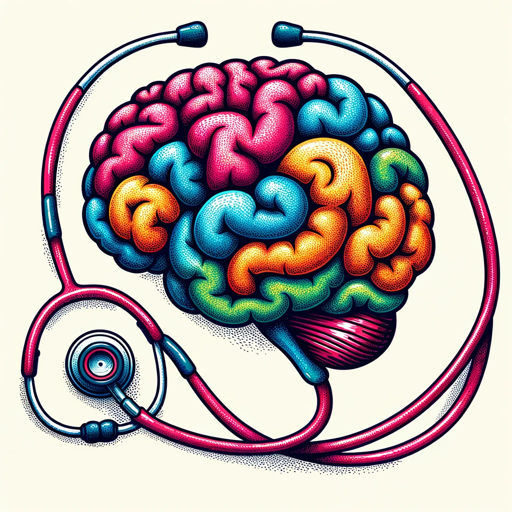USMLE STEP 1-USMLE-style question generator
AI-powered USMLE preparation tool
Related Tools
Load More
AI for Medical Students
Medical Study AI aids in Medical Assistant learning, AI for Medical Students, understanding Medical Terminology, navigating Medical School, and Molecular Biology concepts. It's an essential tool for medical education and knowledge.

USMLE Step 1 Study Buddy
Straight to the point high yield info with mnemonics and buzzwords for USMLE Step 1.

Dr. Hoot - Medical Study Buddy
Wise, friendly, and efficient USMLE Step 1 & 2 study aid.

Medical School Exam AI
AI Prep for medical school exams including all USMLE exams

Medical Student GPT
Advanced AI tutor trained to maximise medical students potential; generate realistic clinical questions, quizzes to consolidate learning, explain concepts or solve medical questions.
Boards and Beyond Step 1 Expert
Provides information based off B&B Step 1 video subtitle data.
20.0 / 5 (200 votes)
Introduction to USMLE STEP 1
USMLE STEP 1 is one of the most critical examinations for medical students, designed to assess a foundational understanding of the basic sciences underlying the practice of medicine. The exam evaluates a student's ability to apply knowledge from disciplines like anatomy, physiology, pathology, pharmacology, and microbiology to clinical scenarios. A central aspect of STEP 1 is its focus on integrating basic science with clinical practice, allowing students to demonstrate how theoretical knowledge is used to diagnose and treat diseases. For example, students might be asked to identify the underlying physiological mechanism behind a patient’s abnormal heart rhythm, integrating concepts from both physiology and pharmacology. This exam is typically taken after the first two years of medical school and serves as a benchmark for determining students' readiness for clinical rotations and further medical training.

Main Functions of USMLE STEP 1
Assessing Basic Science Knowledge
Example
The exam tests students on critical areas such as cell biology, biochemistry, and medical genetics.
Scenario
A student encounters a question about the biochemical pathways involved in DNA replication and is asked to identify which enzyme is defective in a patient with a genetic disorder. The question integrates molecular biology with clinical implications, testing the student's understanding of both.
Applying Basic Science to Clinical Practice
Example
The exam frequently presents clinical vignettes that require students to connect foundational knowledge with patient care scenarios.
Scenario
A question might present a patient with symptoms of congestive heart failure and ask the student to identify the underlying pathophysiological mechanism responsible for the clinical presentation. This function requires students to bridge their knowledge of heart anatomy and function with clinical symptoms.
Critical Thinking and Problem-Solving
Example
Students are tested on their ability to synthesize information from various basic science disciplines to arrive at the best possible diagnosis or management plan.
Scenario
A case might involve a child presenting with fever and sore throat, and the student is asked to choose the most appropriate pharmacologic treatment based on the suspected bacterial infection. This requires the student to integrate microbiology, pharmacology, and clinical reasoning.
Ideal Users of USMLE STEP 1
Medical Students
Medical students in the U.S. and internationally, typically after completing the first two years of medical school, are the primary users of USMLE STEP 1. These students benefit from the exam as it acts as a critical step in their medical education, allowing them to advance into clinical rotations. Passing STEP 1 is also essential for residency applications and career progression.
International Medical Graduates (IMGs)
IMGs seeking to practice medicine in the United States are also a key user group. These individuals must pass STEP 1 to validate their medical education and become eligible for U.S. medical residency programs. For IMGs, this exam is essential in demonstrating competency in basic medical sciences and gaining entry into the competitive U.S. healthcare system.

How to Use USMLE STEP 1 Tool
Visit aichatonline.org
Start by visiting aichatonline.org to access a free trial of the USMLE STEP 1 tool, with no login required. You don’t need ChatGPT Plus to use it.
Explore the Free Trial
Use the free trial to familiarize yourself with the tool’s features. Try generating USMLE-style questions, reviewing explanations, and navigating through the interface for hands-on experience.
Set Study Goals
Before diving deep into the tool, outline your learning objectives, such as mastering specific medical topics or practicing for high-yield exam sections.
Generate and Review MCQs
Use the tool to generate multiple-choice questions across various topics, ensuring each question includes detailed explanations for better comprehension.
Optimize Learning with Customization
Leverage the tool's customization options to tailor your study sessions to weak areas, and keep track of your progress by revisiting previously answered questions.
Try other advanced and practical GPTs
Captable AI
Automate your cap table with AI precision

Mestre da Enfermagem
AI-powered nursing assistant for academic and clinical use.

喜多方先生(I'm a Sensei on Kitakata, Japan)
Discover Kitakata with AI-powered insights.

会津先生(I'm a Sensei on Aizu, Japan)
Explore Aizu's heritage with AI.

商品説明マスター(各プラットフォーム対応)
AI-Powered Product Description Mastery

ChatBnB | Soporte para Anfitriones de Air BnB
AI-powered support for Airbnb hosts

Improved Efficiency
AI-Powered Solutions for Efficient Results

MirrorAI八字取象
AI-powered symbolic landscape from BaZi

사주팔자 (四柱八字) - 사주, 운세, 운명
AI-powered traditional fortune-telling.

Tagalog Translator
AI-Powered Tagalog and English Translations.

Modelica Engineer
AI-powered Modelica modeling assistant

PyTorch Engineer
AI-Powered PyTorch Coding Assistant

- Exam Prep
- Self-Assessment
- Question Generation
- Concept Reinforcement
- Medical Review
USMLE STEP 1 Tool FAQs
What is the USMLE STEP 1 tool used for?
The USMLE STEP 1 tool is designed to help medical students prepare for the USMLE Step 1 exam by generating high-quality, exam-style multiple-choice questions along with detailed explanations.
Can I customize the topics in the tool?
Yes, the tool allows you to customize questions based on specific medical subjects or high-yield topics, ensuring that you focus on areas where you need the most practice.
Do I need a subscription to use the tool?
No subscription is required to start using the tool, and you can explore its core functionalities with a free trial that doesn’t require any login.
What type of explanations does the tool provide?
The tool offers detailed explanations for each multiple-choice question, helping you understand the reasoning behind the correct answers and reinforcing key medical concepts.
Can the tool track my progress?
Currently, progress tracking isn't available in the free trial version, but you can manually track your performance by revisiting generated questions and focusing on missed areas.